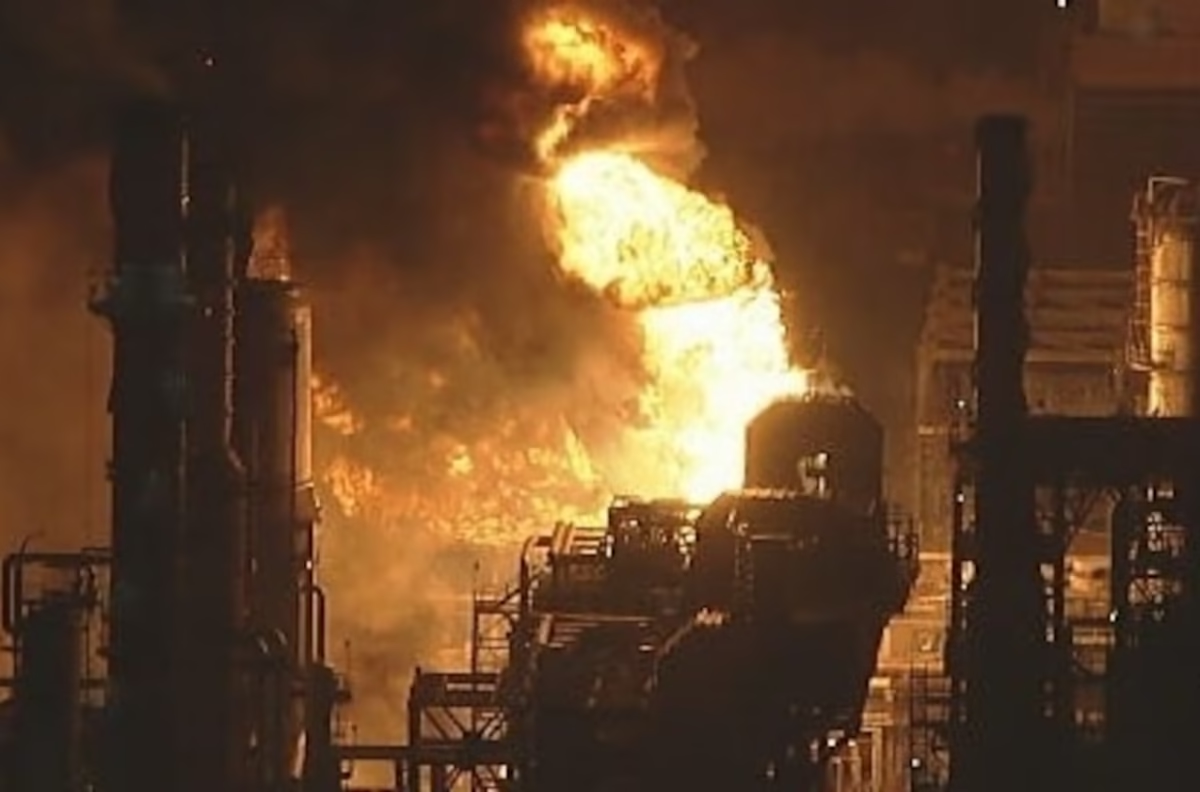Chevron Refinery: What happened at the El Segundo fire

Fire at Chevron El Segundo refinery. Image Credit: ABC News
A massive fire broke out late Thursday night at Chevron’s El Segundo refinery in Los Angeles County, prompting a swift response from fire crews and local authorities. Video footage captured flames bursting from stacks and heavy smoke visible across the skyline. No evacuations have been ordered so far, and officials reported no confirmed injuries.
The incident has renewed scrutiny of the safety, capacity, and critical role of Chevron’s refinery operations in the U.S. energy infrastructure.
What Happened at the Chevron Refinery?
Eyewitnesses reported a loud explosion around 9:30 p.m. PDT, followed by towering flames spilling from stacks and refinery equipment. The fire was contained to a section of the facility, according to county officials, and local authorities advised residents to stay indoors.
Chevron later reported emergency flaring at the site in regulatory filings. Authorities continue investigating the cause, which remains unknown.
Chevron Refinery: Capacity and Significance
Chevron’s El Segundo refinery is one of the largest on the U.S. West Coast, with a processing capacity of approximately 290,000 barrels of crude per day. It is also known to maintain storage capacity for around 12.5 million barrels across roughly 150 tanks.
With more than 1,100 miles of pipelines and coverage spanning about 1.5 square miles – according to the Company’s website – the facility handles gasoline, diesel, and jet fuel production.
In earlier months of 2025, Chevron had been working to restart parts of the refinery after temporarily shutting some units, including a 100,500 bpd distillation unit, while other units remain offline.
READ ALSO
Greta Thunberg detained: What really happened on the Gaza Flotilla?
Response, Safety Measures, and Community Impact
California’s Governor Gavin Newsom confirmed his office is coordinating with local and state agencies to ensure public safety. Meanwhile, Los Angeles Mayor Karen Bass stated there was no known impact to LAX operations.
El Segundo officials and the Los Angeles County Fire Department worked alongside Chevron’s onsite teams to control the blaze. Local supervisors said the fire was contained and no major evacuation was needed, but smoke and air quality remain a concern.
Authorities cautioned residents to close windows and stay inside as smoky conditions could worsen.
Why Chevron Refineries Matter & What This Incident Highlights
Chevron’s refineries are critical to U.S. energy infrastructure, supplying fuel for transportation and aviation. Disruptions can ripple through supply chains, especially in fuel-sensitive markets.
The El Segundo fire underscores the challenges refineries face: managing aging infrastructure, safety protocols, and rapid response to emergencies. It also highlights how vital transparency and public communication are during such crises.
FAQ
Q1: What happened at Chevron’s El Segundo refinery?
A1: A major fire erupted at the Chevron refinery in El Segundo on the night of October 2, 2025, following a reported explosion. The blaze was contained to one section.
Q2: Were there any injuries or evacuations?
A2: As of the latest reports, no injuries have been confirmed and no evacuations have been ordered.
Q3: What is the processing capacity of the El Segundo refinery?
A3: The refinery can process up to 290,000 barrels of crude oil per day.
Q4: How much storage does the facility hold?
A4: It has about 12.5 million barrels of storage capacity, across roughly 150 storage tanks.
Q5: What products does the refinery produce?
A5: The El Segundo refinery produces gasoline, jet fuel, and diesel for regional consumption.
Q6: Did Chevron shut down operations before the fire?
A6: Earlier in 2025, Chevron had taken parts of the refinery offline. The 100,500 bpd crude distillation unit was restarted, but other units remained offline.
Q7: What is emergency flaring?
A7: Emergency flaring is a safety procedure in which excess gases are safely burned off to reduce pressure or risk when certain systems fail or are compromised. Chevron reported flaring during the fire.
Q8: Will this fire affect fuel supply or airport operations?
A8: Officials said LAX operations were not impacted and there is no immediate indication of fuel supply disruption, but monitoring continues.
Q9: How common are refinery fires?
A9: Fires at oil refineries are rare but not unheard of, given the volatile materials involved. They often prompt investigations and safety reviews.
Q10: What is the age and history of the El Segundo refinery?
A10: The El Segundo refinery was originally built in 1911 and later became part of Chevron’s operations. It has been a key facility on the West Coast for over a century.
⚠️ Note: This is a developing story. Updates may follow as investigations proceed and Chevron or local authorities issue further details.

